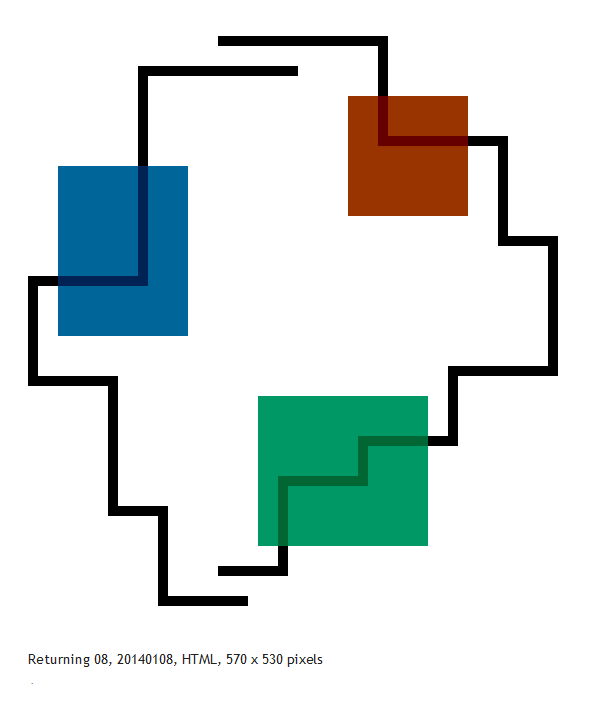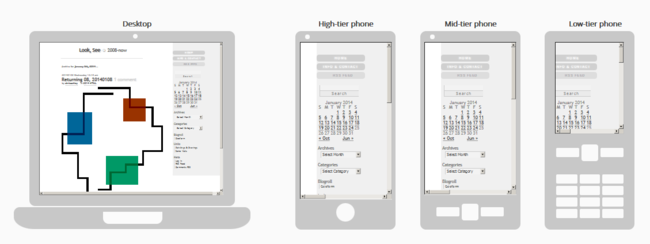
Screenshot of Chris Ashley HTML drawing Returning 08, 20140108 (the HTML original appears on his blog). What could be a Bauhaus design problem ("make a color appear transparent relative to its surrounding color") or a variation on Peter Halley's cell-and-conduit grammar could also be a cartoon floor plan or an especially inept maze. There's quite a bit of wry humor in this simple-seeming pattern.
This and other quasi-pictographic works of abstract art are executed by Ashley in Dreamweaver, a program used for making web pages back in the halcyon DIY days of HTML, before developers commandeered -- some might say "stole" -- online practice away from everyday users through use of complex CSS and javascript routines. Dreamweaver essentially yields a set of coded instructions to "put this color here, put that color there," resulting in ephemeral web browser art, where the browser acts as both canvas and portable art gallery.
Ashley has continued this work as a daily practice since the early 2000s, despite the lack of critical infrastructure that could explain or validate the work. Most of the New Media websites are not comfortable talking about abstract painting, and most critics versed in Ryman and Palermo "don't know from HTML." Worse, technology changes are affecting "browser art" as a neutral, predictable space for viewing work, due to the aforementioned CSS-and-scripting hegemony but also because people increasingly browse on smartphones, which reduce screen widths and alter page layouts.
So-called mobile ready designers don't like HTML tables, due to their unpredictability in different contexts. So what does an artist do when a medium originally premised on wide popular accessibility becomes esoteric due to changing tech? I've been saving these Ashley works as PNG files (with no loss of resolution), which can be easily resized by current browsers. But that's changing the meaning and purpose of the work, to arrive at an "archival" solution. They could also be printed-out as paper pieces but I've seen them in person and they aren't as exciting; they really need that back-lit screen glow to come alive. Lightbox transparencies? Now we're reinventing the work completely. Despite all this fretting, the art is still being made and can still be seen, so check it out!

